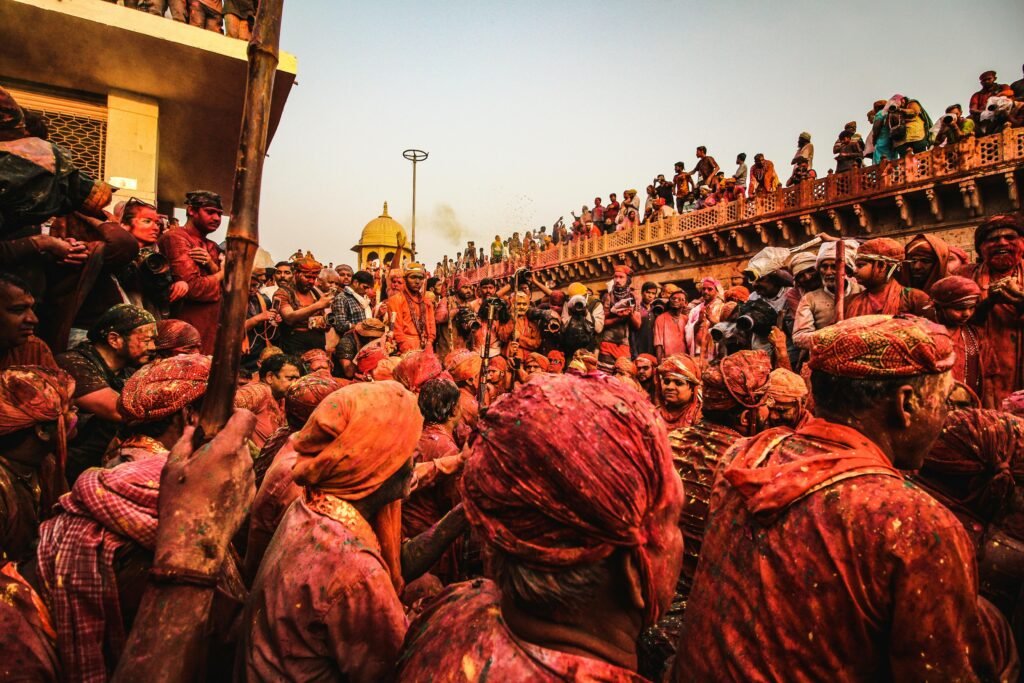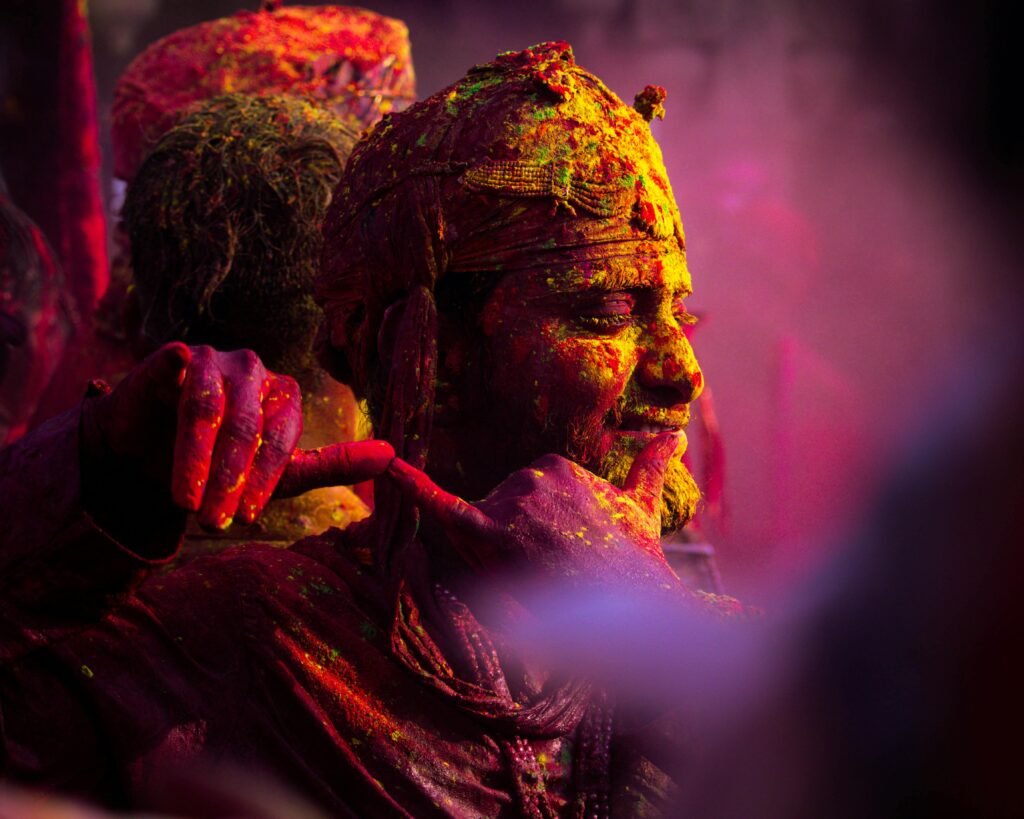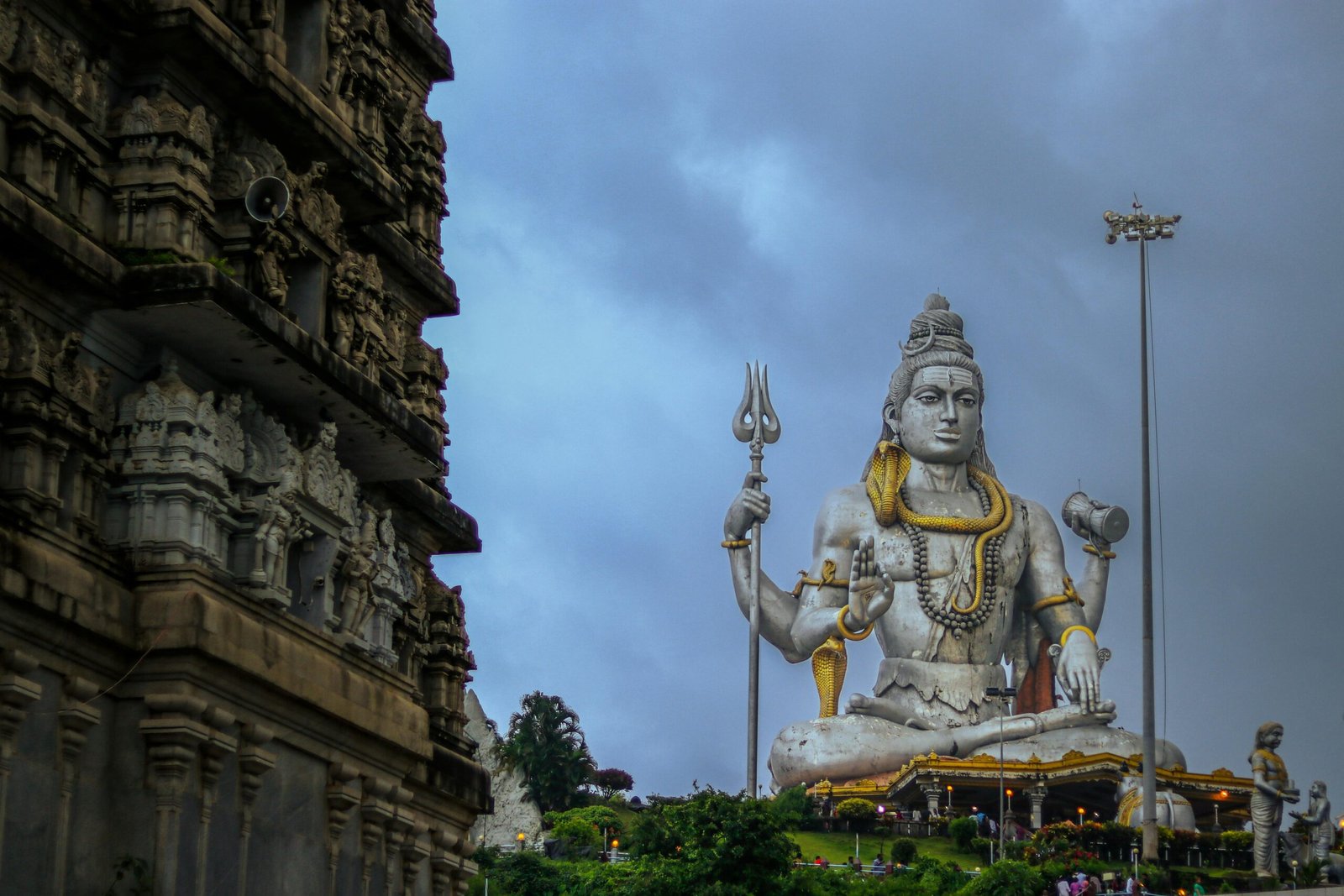
Beyond the Jyotirlingas
Not every powerful Shiva temple is a Jyotirlinga. Yet, some radiate energy that will shake your soul awake.
These Divine Mahadev temples may not be in the famous twelve, but their aura is unmatched. You feel it in the air, the silence, the legends.
Take Amarnath Cave, for example. Here, Lord Shiva whispered the secret of immortality to Parvati. Even today, an ice Lingam forms naturally. Isn’t that a miracle worth seeing?
In Bijli Mahadev, a lightning bolt shatters the Lingam every year. Priests lovingly piece it back together using butter and faith.
Temples like Tungnath and Patal Bhuvaneshwar are hidden in hills and caves, rich in stories from the Skanda Purana.
So dear Shiv Bhakt, this is your calling.
These places are not just temples. They’re divine memories waiting for your footsteps.
Visit once. Experience always.
Because Divine Mahadev temples like these are once-in-a-lifetime blessings.
1. Amarnath Temple (Jammu & Kashmir) – A Divine Mahadev Temple Beyond Words
Tucked deep in the Himalayas, Amarnath Temple is not a Jyotirlinga, yet holds unmatched divinity.
This Divine Mahadev temple is famous for its naturally forming ice lingam, known as the swayambhu Shivling.
Each year, the lingam appears in the holy cave during Shravan month. It’s believed to wax and wane with the moon.
Legends say that Lord Shiva chose this remote spot to reveal the Amar Katha – the secret of immortality to Goddess Parvati.
To protect the secret, He left behind His Trishul, Nandi, and even Mother Ganga. Only Parvati and the cave remained.
Even the five elements—earth, fire, water, air, sky—were set aside. Only truth and trust entered with Him.
The cave sits at 3,888 meters altitude, surrounded by snow peaks and glaciers. The yatra starts from Pahalgam or Baltal.
It’s a 46-km trek, full of breathtaking views, icy winds, and nonstop “Har Har Mahadev!” chants.
DivyaKripa App shows you the yatra route, cave location on map, darshan timings, and safety tips.
It even shares an audio story of Amar Katha, so you feel the journey in your heart before you start.
If you’re a true Shiv Bhakt, Amarnath is not just a place. It’s a soul’s calling.
2. Tungnath Temple (Uttarakhand) – A Divine Mahadev Temple Above the Clouds
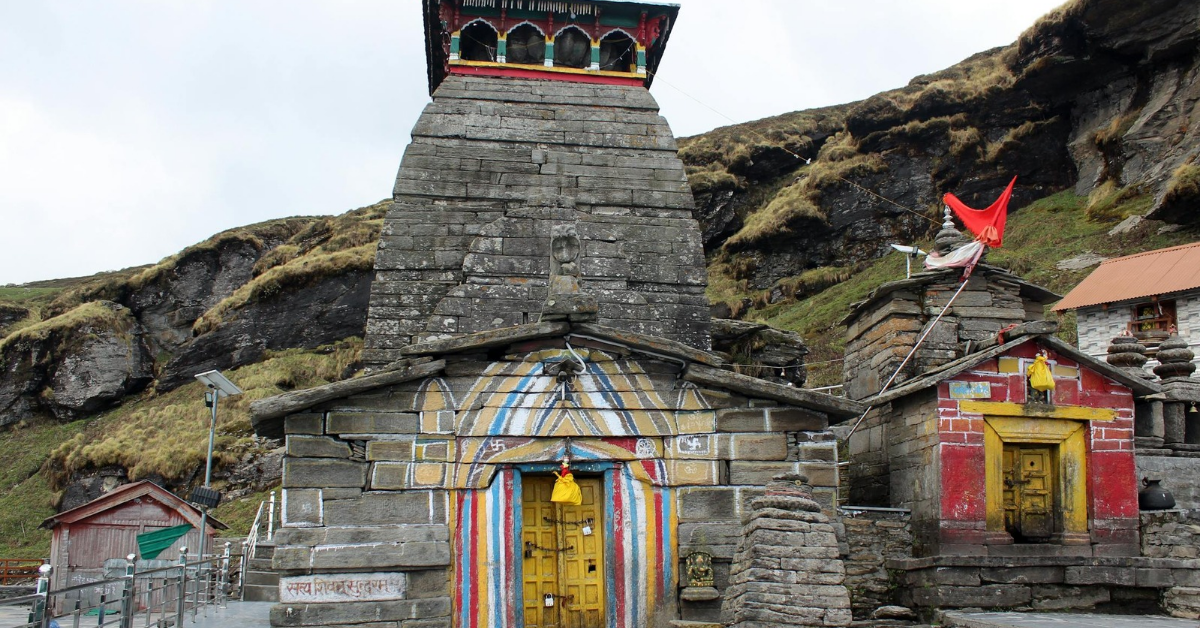
Tungnath is not just high—it’s the highest Shiva temple on Earth, standing tall at 3,680 meters.
It’s part of the legendary Panch Kedar temples, said to be built by the Pandavas.
The story goes that after the Mahabharata war, the Pandavas sought Lord Shiva’s forgiveness.
Shiva avoided them by taking the form of a bull and disappearing into the ground.
He later reappeared at five spots—Tungnath is where His arms were found. That’s why it’s so sacred.
The trek to Tungnath is short but stunning. Just 3.5 km from Chopta, also called the Mini Switzerland of India.
You’ll pass through misty forests, rhododendrons, and snow-covered paths if you go in winter.
At the top, the view is surreal. You can spot Nanda Devi, Trishul, and Kedarnath peaks.
It feels like Mahadev is watching over His creation from here.
Despite its altitude, the temple is open from May to October and closed during winters.
The idol is moved to Mukkumath village during snow season.
Tungnath may not be a Jyotirling, but it’s one of the most peaceful Divine Mahadev temples.
You feel close to heaven—and closer to Him.
A trip here is not just a trek. It’s a soulful darshan above the clouds.
3.Patal Bhuvaneshwar (Uttarakhand)
Patal Bhuvaneshwar in Uttarakhand is a unique Divine Mahadev temple hidden 90 ft beneath earth. It is a sacred subterranean cave temple . You step down nearly 82‑100 stairs through dim tunnels into Shiva’s deep abode.
This cave is around 160 m long, carved naturally in limestone. Inside, you see stalactites shaped like Shesh Nāg, Ganesha, Kal Bhairav and more . Legends say the cave houses 33 koti (types) of gods—not 330 million, a mistaken twist in the lore . It’s full of Divine Mahadev temple energy and ancient spirituality.
The Skanda Purāṇa even mentions this cave as Shiva’s underworld shrine. King Rituparna first discovered it during Treta Yuga after chasing a deer and dreaming of Shesh Nāg guiding him . In Kali Yuga, Adi Shankaracharya rediscovered the cave in 1191 AD and reinstalled regular worship .
On Maha Shivratri, it’s believed 330 million gods worship here. You can feel that divine weight in every echoing chant. Inside, you might sense Pandavas meditating here, seeking Shiva’s blessings before heading to the Himalayas.
This Divine Mahadev temple is like entering the spiritual centre of earth. You can almost hear cosmic chants. Visiting here feels like walking into a living legend.
4.Mahabaleshwar Temple, Gokarna (Karnataka)
You walk into an ancient Divine Mahadev temple, built in the 4th century by King Mayurasharma of the Kadamba dynasty. Its timeless Dravidian architecture feels like a step back into history.
Deep inside, you find the famous Atmalinga. Legend says Ravana tried to carry it to Lanka. But Ganesha, disguised as a boy, tricked him into placing it here. Once it touched the earth, it rooted forever. That act named it “Mahabala,” meaning the strongest .
You stand by a small hole in the pedestal and glimpse the top of this powerful Atmalinga, believed to carry Shiva’s soul . Many say just a glimpse grants immense blessings. It’s why this temple is called “Dakshin Kashi”—the Southern Kashi .
Every Maha Shivaratri, the temple pulses with energy. You join vibrant Rath Yatra processions and feel pure devotion . You cleanse in the Arabian Sea, pray to Ganapati first, then enter the sanctum.
This Divine Mahadev temple not only shelters a mighty lingam. It also holds centuries of legends, architecture, and devotional anecdotes. Visiting gives you a soulful connection with Shiva—history, myth, and faith in perfect harmony.
5.Baijnath Temple, Himachal Pradesh
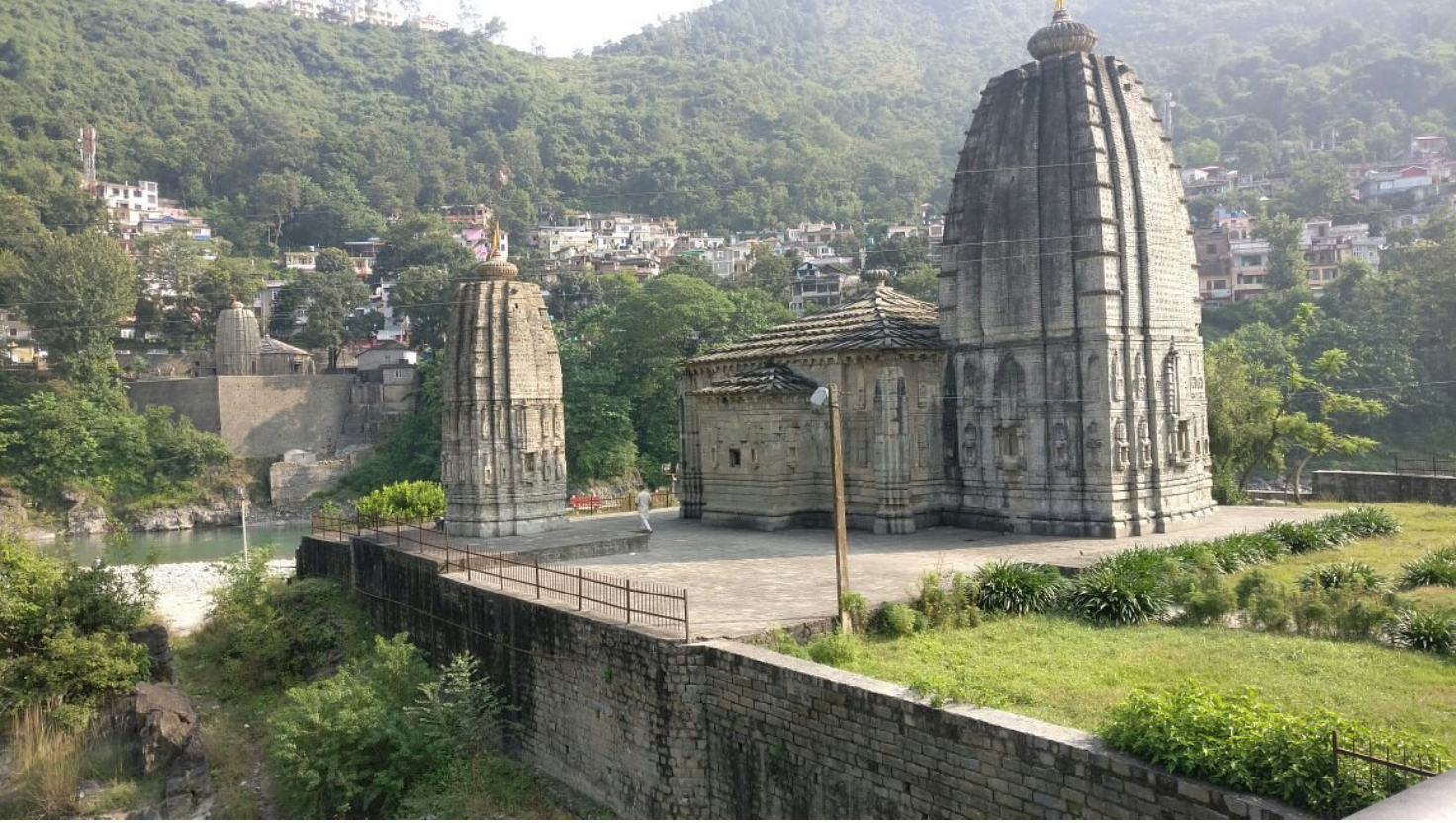
You step into a beautiful Divine Mahadev temple nestled in Kangra Valley. It glows with timeless Nagara‑style architecture.
This site holds the ancient Vaidyanath Lingam. That linga existed long before the 12th‑century temple walls.
Two merchant brothers, Ahuka and Manyuka, built the temple in 1204 AD to honor Shiva as the “Lord of Physicians.”
Legend tells Ravana brought this sacred linga here. He placed it down and it rooted itself forever.
You will spot detailed carvings of Ganesha, Harihara, and Andhaka’s defeat on the walls.
Local lore says Ravana offered his ten heads here. Shiva was moved and named him Vaidyanath for healing him.
The temple survived the 1905 Kangra earthquake and saw renovation by king Sansar Chand in the 18th century.
In every Maha Shivaratri, you’ll find this shrine full of devotion. The aarti and bhajans fill your soul.
A playful anecdote: locals don’t celebrate Dussehra here out of respect for Ravana’s devotion.
Visiting this Divine Mahadev temple brings you closer to Shiva’s healing grace. You can pause, chant Om Namah Shivaya, and feel restored. It’s history, legend, and devotion blended beautifully for you.
6.Avittathur Mahadeva Temple, Kerala
You step into a 2,000‑plus‑year‑old shrine nestled in Avittathur village, Thrissur district. You instantly feel the serene energy of this Divine Mahadev temple.
The heart of the temple is a swayambhu Shiva lingam, believed to be self‑manifested by Sage Agastya himself. Parasurama, the creator of Kerala, is also said to have installed it .
You soon notice the circular sanctum (vatta sreekovil) with copper‑tiled roof and carved wooden pillars. The carvings depict Kiratarjuniya, Ramayana scenes, and nine planets.
Spiritually, you bask in rituals tied to the 108 ancient Shiva temples of Kerala . Daily, Shiva appears as Kirathamoorthy in morning, Dakshinamurthy at noon, and Parvathi‑ParamaSiva by evening .
Festivals here feel epic. Annual utsavam lasts 10–28 days, with elaborate rituals, temple arts, koothu performances, elephant processions, and Maha Shivaratri devotion .
You walk around a huge 3‑acre complex. There’s a homa‑kundam linked to Sage Agastya’s penance. Inscriptions from 10–13th centuries mark its ancient heritage.
An anecdote: Devotees believe a glance at the lingam grants knowledge, healing, and spiritual growth. You too feel uplifted.
Visiting this Divine Mahadev temple gives you history, legend, art, and devotional bliss—all in one sacred place.
7.Bijli Mahadev Temple, Kullu (HP)
You climb to a hilltop shrine at about 2,460 m, enjoying sweeping Kullu and Parvati valley views.
The temple is named “Bijli Mahadev” because lightning strikes its lingam as if called by Mahadev himself.
This lightning event shatters the lingam into pieces. The priest rescues fragments and reassembles them with butter and sattoo flour.
Legend says Shiva absorbs lightning here to defend Kullu from demons and negative energies
You see a tall deodar staff (around 60 ft) beside the temple. It attracts lightning and channels divine power.
Thanks to this lightning ritual, locals call it a fierce protector. They say negative energies vanish when the lingam shatters
The temple’s Kath‑Kuni stone‑wood architecture blends naturally with the Himalayan landscape.
You trek through enchanting deodar forests and meadows. The path weaves 600 steps up to this sacred mountaintop.
On Maha Shivaratri and Shravan Amavasya, devotees gather here in great numbers. Rituals, aarti, and hymns fill the crisp mountain air.
One fond anecdote: villagers say a child picks fallen lingam pieces after lightning strikes. You can picture the faith in that simple act.
Visiting Bijli Mahadev gives you a soulful mix of nature, devotion, and living legend. You experience how a Divine Mahadev temple can literally shatter and heal before your eyes.
8.Vaikom Mahadeva Temple, Kerala
You step through a serene courtyard stretched across eight acres. Its traditional Kerala architecture feels timeless and earthy.
At the heart lies a lingam from the Treta Yuga—claimed to be self-manifested and worshipped uninterrupted since then You sense that sacred energy as soon as you pass through the six-stepped mandapa.
You worship “Vaikkathappan,” a deity loved by both Shaivites and Vaishnavites. This temple fosters unity in devotion. You feel spiritual harmony when you join rites meant for both Shiva and Vishnu followers.
Legends speak of Khara Asura receiving three lingams from Shiva. One settled here when he rested.You’re part of that ancient story whenever you bow before the lingam.
The immortal Parasurama later built the temple and fixed its rituals himself. You follow in his footsteps, lining up your offerings just as he did.
The oval-shaped sanctum sanctorum, crowned with copper roofing, draws your attention. It’s rare and visually striking in Kerala temple design.
During Vaikathashtami and Maha Shivaratri, vibrant festivals erupt. Devotees gather for processions, chants, and blessings. You can almost taste devotion in the air
This Divine Mahadev temple is more than a structure—it’s living legend, history, and spiritual warmth blended beautifully. You leave filled with devotion, unity, and sacred echoes of ancient lore.
Why These Temples Matter
ou might wonder—why visit these temples when they aren’t among the famous Jyotirlingas? The answer lies in their divine uniqueness.
These Divine Mahadev temples house swayambhu lingams, believed to be self-manifested—not carved or installed by humans. That alone makes them sacred.
Many of these shrines are rooted in epic tales. From Ravana’s Atmalinga to Sage Agastya’s penance, legends live in every stone.
You don’t just visit these temples—you experience them. Trek up hills, crawl through caves, or witness lightning strike a lingam.
At Bijli Mahadev, lightning shatters the Shiva lingam—and priests piece it back with butter. Where else would you see that?
In Kerala’s Vaikom, Shiva and Vishnu devotees worship side by side. It’s a rare symbol of spiritual harmony you’ll feel instantly.
Some places, like Baijnath, are linked to Ravana’s extreme devotion—where he offered his ten heads to Shiva.
Pilgrims also believe these temples radiate healing energy. That’s why Vaidyanath or “Physician Shiva” is prayed to for curing illness.
Even if they’re not Jyotirlingas, they are powerful spiritual anchors that preserve India’s mythological heritage.
Visiting these Divine Mahadev temples is not just about rituals—it’s about feeling connected, uplifted, and divinely charged. You carry the blessing long after you leave. To learn more about lesser known Mahadev temples to visit during Shravan , read our blog.
Pilgrim Tips & Practical Info
Planning your visit to these Divine Mahadev temples? Here are some handy pilgrim tips to make your journey smooth and fulfilling.
Many temples like Bijli Mahadev require a moderate trek—expect about 600 steps through beautiful forests. Trekking shoes and light bags help!
The best seasons are spring and autumn, when weather is pleasant and nature is in full bloom. Avoid heavy rains or winters in the hills.
Access varies: some temples are near towns with good roads, like Baijnath and Vaikom. Others, like Patal Bhuvaneshwar, need guided cave tours. Permits may be needed for cave entry or forest treks—check local info before you go.
Lodging ranges from cozy guesthouses in nearby towns to dharamshalas offering simple stays. Booking in advance during festivals is smart.
Use apps like DivyaKripa for embedded maps and audio legends—these add rich spiritual context as you explore.
Darshan timings often start early morning and close by evening. Join ritual aartis and chants to deepen your experience.
Travel light, keep an open heart, and embrace the spiritual magic of these unique Divine Mahadev temples on your journey.
Trip Planning & Itineraries
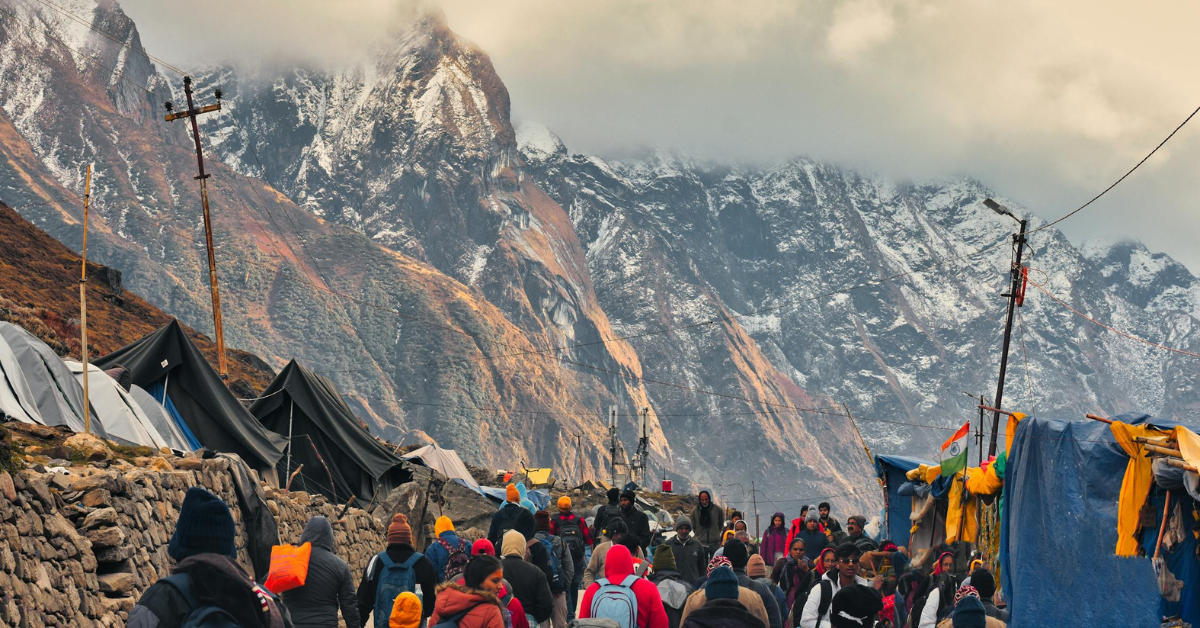
Planning a pilgrimage to Divine Mahadev temples? Why not combine trekking adventures with spiritual darshan for a fulfilling journey?
For the Himalayas, try a 5-day circuit covering Bijli Mahadev, Baijnath, and Patal Bhuvaneshwar. Trek through deodar forests, mountain trails, and mystical caves. Each temple offers unique legends and powerful energies. You’ll feel Shiva’s presence in every step.
On the coastal route in Karnataka and Kerala, explore Mahabaleshwar Temple in Gokarna, followed by Vaikom and Avittathur temples in Kerala’s Malabar region. Walk along serene beaches, lush backwaters, and historic temple towns. This trip blends peaceful nature treks with sacred worship.
In Malabar, the 3-day Avittathur–Vaikom circuit invites you to experience Kerala’s traditional temple architecture and festivals. Don’t miss the chance to witness rituals where Shaivas and Vaishnavas unite in devotion.
Start your days early to catch darshan during morning rituals. Join evening aartis and bhajans for soul-soothing experiences. Carry light gear and wear comfortable shoes—you’ll need them for temple treks and caves.
Each route offers more than sightseeing: it’s a chance to connect deeply with Shiva’s divine energy. You’ll return refreshed, inspired, and blessed by these unique Divine Mahadev temples.
Conclusion
The 12 Jyotirlingas are famous, but there’s so much more to explore! These hidden Divine Mahadev temples offer unique stories, miracles, and spiritual energy. They invite you to experience Shiva’s presence in new, profound ways.
From lightning-struck lingams to ancient caves, these shrines reveal divine synergy that’s deeply inspiring. You’ll find peace, healing, and devotion woven into every visit.
Why not go beyond the usual and discover these sacred places yourself? Each temple has its own legend and charm waiting for you.
To help you on this journey, download the DivyaKripa App. It offers exclusive guides, rich audio legends like the Amar Katha, easy-to-follow maps, and travel tips.
Track your darshan progress and never miss a ritual or aarti. With DivyaKripa, your pilgrimage becomes more meaningful and accessible.
Step into the world of Divine Mahadev temples beyond the Jyotirlingas. Your soul will thank you!

